Ideologies of War, Genocide & Terror
Publications & Video
Ackerman, John Wolfe
Alvarez, Josefina Echavarría
Anderson, Orion
Aroneau, Eugène
Atran, Scott
-
For Cause and Comrade: Devoted Actors and Willingness to Fight
(Paper)
This report provides initial evidence that ‘devoted actors’ who are unconditionally committed to a sacred cause, willingly make costly sacrifices—including fighting and dying.
-
Reframing Sacred Values
(Paper)
People believe that devotion to essential or core values—such as the welfare of their family and country, or their commitment to religion, honor, and justice—are absolute and inviolable.
- War as a Moral Imperative (Not Just Practical Politics by Other Means) (Paper)
Atta, Mohamed
- Last Words of a Terrorist (letter/document)
Ayling, Douglas
Azzam, Shiekh Abdullah
-
Martyrs: The Building Blocks of Nations
(Lecture)
“History does not write its lines except with blood. Glory does not build its loft edifice except with skulls, Honour and respect cannot be established except on a foundation of cripples and corpses.”
Bailey, J. & Susman, M.
- Caring Corrupted: the Killing Nurses of the Third Reich (Video Documentary)
Baird, J. W.
-
To Die For Germany: Heroes in the Nazi Pantheon
(Book Excerpts)
“During the Great War, propagandists and poets alike joined hands in exalting the blood sacrifice of the youth of Germany, thus transforming carnage into ethereal national revelation.”
Bartov, Omer
-
Genocide and War: The Holocaust as a War Goal or an Obstacle to Victory
(Video)
“From: Symposium Marking 70 Years Since the Wannsee Conference The Organization of the Mass Murder of the Jews and Its Significance (Yad Vashem, January 23, 2012)”
- Industrial Killing: World War I, the Holocaust, and Representation (Lecture)
Behnke, Andreas
- ‘Postmodernising’ Security (Paper)
Behrenbeck, Sabine
Bein, Alex
Berger, Peter
Berman, Paul
-
Terror and Liberalism
(Book Excerpts)
“It is odd to think that tens of millions of people might end up joining a pathological political movement. Surely, millions of people are not going to choose death, and the Jonestowns of this world are not going to take over entire societies.”
Bessel, Richard
-
Nazism and War
(Book Excerpts)
“Only weeks before unconditional surrender, on April 7, 1945, Donitz called upon all naval officers to fight to the bitter end. Military police and SS units patrolled behind the lines to catch and kill any soldier who might be suspected of desertion.”
Bin Laden, Osama
- Declaration of War Against the Americans (Text)
- Interview with Osama Bin Laden (Interview)
Bloom, Peter

-
Fighting the “Real” Enemy: Fantasizing the Liberal “Final Solution”
Enemies, whether or not they constitute an actual threat, reflect an illusionary identity connected to a collective cultural fantasy. This paper seeks to construct a theory for understanding the universal political and cultural role of paranoia, demonization and enemy creation. It highlights the affective “grip” of ideologies revolving around a mass fear of enemies across time and contexts. Selfhood is constructed through the presence of a “fantasamatic narrative” centering on the eternal struggle to realize a promised utopian state against the constant threat of a malicious “Other”.
Bloxham, Donald
-
The Final Solution: A Genocide
(Review Essay)
Donald Bloxham, The Final Solution: A Genocide (Oxford: Oxford University Press, 2009). Commentary by Jürgen Matthäus, Martin Shaw, Omer Bartov, Doris Bergen & Donald Bloxham.
Bonadeo, Alfredo
-
Mark of the Beast: Death and Degradation in the Literature of the Great War
(Book Excerpts)
“Only men who know how to overcome their ‘personal material egoism’ can understand that war is ‘desirable and holy’—because it brings death, and death welds the individual to the nation (Enrico Corradini).”
Bowman, Glen
Brown, Norman O.
- Life Against Death: The Psychoanalytic Meaning of History (Complete Book)
- Life Against Death: The Psychoanalytic Meaning of History (Book Excerpts)
-
Life Against Death: The Psychoanalytic Meaning of History
(Book Review)
Who created the symbolic order? What is the source of the “power” of society? Freud observed that the mythological conception of the universe is fundamentally psychology projected into the external world. Brown suggests that not just mythology, but the entirety of culture is a projection. In the words of Stephen Spender: “The world which we create—the world of slums and telegrams and newspapers—is a kind of language of our inner wishes and thoughts.”
Browning, Christopher S. & McDonald, Matt
Brownstein, Daniel
Bryson, Michael

-
Dismemberment and Community: Sacrifice and the Communal Body in the Hebrew Scriptures
“The formation of community is inextricably bound up with violence in the Hebrew scriptures. The first murderer becomes the first city-founder. The first unified action by the tribes of Israel—the first not in response to an external threat—results from the dismembering of a woman’s body.”
Brænder, Morton
Bteddini, Lida
Buhrmester, Michael & Swann Jr., William
- Identity Fusion (Paper)
Burrin, Philippe
-
Hitler and the Jews: The Genesis of the Holocaust
(Book Excerpts)
“Hitler viewed his war against the Jews as a battle for the salvation of the world, a fight to the death that could only end with the extinction of one of the two adversaries.”
Buzan, Barry
- Security Concepts (Video Series)
Campbell, David
- Writing Security (Article)
Carpentier, Nico
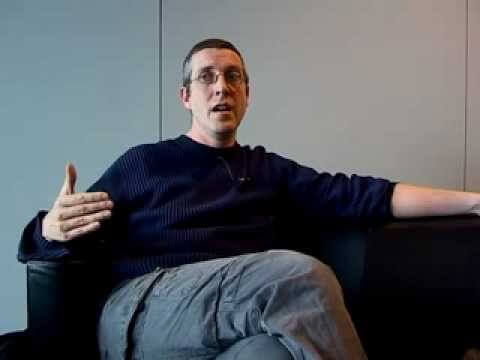
-
Strengthening Cultural War Studies
Although each war has its own history, wars are built on similar ideological mappings. The series of events that compose a war appear to be highly elusive; but the core ideological models that structures war tend to be stable. Both sides present their violent practices as well-considered, unavoidable, and necessary. The construction of the Enemy is accompanied by the construction of the Self as antagonistic to the Enemy’s identity. Ironically, the identity of the Enemy as a constitutive outside is indispensable to the construction of the identity of the Self, as the evilness of the Enemy is a necessary condition for the articulation of the goodness of the Self.
Caverly, Matthew M.
- Nazi Militarism (Paper)
Chen, Zhou
- Violence as Sacred Sacrifice (essay)
Chirila, Alexander

-
Creating the Idealized Nemesis: The Collective Psychology of the Red Scare
The idealized nemesis, as constructed by the collective psychology of a nation, can take many forms, from the barbarous hordes storming the gate to the cunning opponent scheming across a global chessboard. Perhaps the most insidious of these nemeses is the enemy within. Characterized as a viral infection, the enemy within generates a range of psychological reactions on the national scale.
-
Hermits and Healers: Contemporary Approaches to a Classic Spiritual Dichotomy
(Video Lecture)
Given at the international conference, “Religion in a Secular Society: Challenges and Perspectives,” June 19-20, 2017, Constanta, Romania.
-
Pilgrim‐Tourists: Tourism and the Spiritual Experience
(Paper)
This paper examines the role of those who participate in the exchange facilitated by spiritual tourism, as well as the object of their exchange: the spiritual experience itself.
Cocks, Geoffrey

-
The Body Politic: Hitler, Paranoia, and “the Jew” in Modern Germany
Hitler’s fears and fantasies were complemented by a generalized crisis in Germany having to do with the vicissitudes of the ill and well modern body. It was the experience of illness across the populations of Nazi Germany and Nazi-occupied Europe that constituted a dual, dark link between the well and ill self of the modern era and Hitler’s paranoid project for extermination of a created enemy.
Conversi, Daniele
- Modernism and Nationalism (Paper)
- War and Nationalism (Article)
Crim, Brian E.
-
Wernher von Braun’s “Rocket Team” and America’s Military-Industrial Complex
(Essay)
The story of Wernher von Braun and his rocket team’s harrowing escape from the collapsing Third Reich into the warm embrace of a former enemy is one of the more exciting and significant moments from the final days of World War II. This essay examines early intelligence assessments of Wernher von Braun’s rocket team, specifically those challenging the notion the captured Germans were the “best and the brightest.”
Delaney, Carol
Demopoulos, Panayiotis
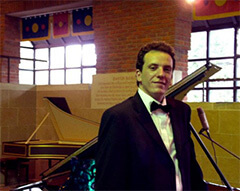
-
Götterdämmerung: Suicide Music and the National Self as Enemy
“What role did music play in the death-throes of the Reich? What did the orchestras of the Reich perform in the latter stages of the war? Examining dialogues from the bunker in the expiring days of the Reich, this essay will illuminate the use of music as means to support the darker and more sinister ideogram of self-punishment and purification.”
Denton-Borhaug, Kelly

- De-escalating U.S. War-culture: A Primer for Peace Advocates (Presentation)
-
Review Essay of Stanley Hauerwas’s Book War and the American Difference: Theological Reflections on Violence and National Identity
(Review Essay)
The sacrificial metaphor at the heart of citizenship, and inextricably tied to war, has incredible power, all the more so because most citizens are unconscious of its active impact in our lives. Most citizens are blithely unaware of the contradiction between their assumptions regarding “the separation of church and state”—and the deeply religious sacrificial war-culture that so profoundly shapes their understandings of citizenship and the nation.
-
U.S. War Culture, Sacrifice & Salvation
(Video)
Lecture given at The 1st Annual IntelliGen Conference on Religion & Violence, April 11, 2015 at Moravian Theological Seminary.
Eckhart, Dietrich
- The Earth-Centered Jew Lacks a Soul (Book Excerpt)
Elshtain, Jean Bethke

-
Identity, the State and Sacrifice
“The Sovereign may bear a masculinized ‘face’ but the nation itself is feminized, a mother, a sweetheart, a lover. One can rightly speak, as Anderson does, of ‘political love, a love that retains the fraternal dimensions of medieval caritas,” but incorporates as well a maternalized loyalty symbolized domestically. The nation is home and home is mother. No more than one chooses one’s parents does one choose one’s country and this adds even greater force to the nature of political love. We fall in love early through language, ‘encountered at mother’s knees and parted with only at the grave,” and through this language ‘pasts are restored, fellowships are imagined, and futures dreamed.’”
Faust, Drew Gilpin
Feldman, Yael S.

-
Dying for the Motherland: Orthodox Christianity and the Invention of “Isaac” as a Jewish Military Hero
(Essay)
The willingness to die for one’s country, be it a fatherland or motherland, seems to derive from a much older human ‘habit’ or ‘reflex’— the universal need to secure one’s well-being by appeasing the gods, or their human representatives (Nietzsche, Genealogy, 61). This appeasement began as a gift giving, or—at times of special duress—by giving up life itself, whether of oneself or of one’s loved ones.
Fornari, Franco
-
The Psychoanalysis of War
(Book Excerpts)
War is a spectacular establishment of a general human situation whereby death assumes absolute value: the ideas for which we die have a right to truth, because death becomes a demonstrative process.
-
The Psychoanalysis of War
(Book Review)
The spirit of sacrifice is intimately related to an ideology in the name of which one may sacrifice oneself. What is this “absolute and unconditional something” that would somehow justify the “establishment of a masochistic-sacrificial position?” The masochistic-sacrificial position (e.g., the role of a soldier) is idealized—becoming a kind of “supervalue”—because it is put into the service of “that absolute and unconditional something.”
Frank, Walter S.
-
The Reality of Battle: First World War, 1914-1918
(Book Excerpts)
“In the deeper shelters, old and battle-hardened troops shook their heads. The new recruits with big eyes and quivering bodies were watched with apprehension. Some turned green and began vomiting. Some began sobbing.”
Freud, Sigmund
- The Mechanism of Paranoia (Book Excerpt)
Fritz, Stephen G.
- ‘We are Trying… to Change the Face of the World’—Ideology and Motivation in the Wehrmacht on the Eastern Front: The View from Below (Paper)
-
Frontsoldaten: The German Soldier in World War II
(Book Excerpts)
“To serve a Volksgemeinschaft, to believe in Hitler as the German Fuhrer—these were ideals pressed into the souls of German youth. ‘Our freedom was service’: this line from a Hitler Youth song reflected the ideal of devotion to the community—even to the point of death.”
Frčkoski, Ljubomir
- Restless Nationalism (Book)
Fürst von Urach, Albrecht
- The Secret of Japan’s Strength (Booklet)
Gardiner, Steven
Gentile, Emilio
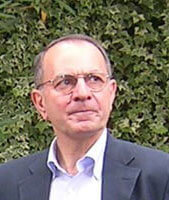
-
A Never-Never Religion, A Substitute for Religion, or a New Religion?
“Civil and political religions belong to a more general phenomenon, secular religion. This term describes a more or less developed system of beliefs, myths, rituals, and symbols that create an aura of sacredness around an entity belonging to this world and turn it into a cult and an object of worship and devotion. The experience of totalitarian religions authorizes us to argue that politics was the battlefield where the new gods fought for supremacy over men during the twentieth century. Those who witness the advent of totalitarian religions were certainly convinced of this, and they considered such religions to be a deadly danger to humanity.”
- Fascism and the Italian Road to Totalitarianism (Paper)
Geyer, Michael
-
“There is a Land Where Everything is Pure: Its Name is Land of Death”
(Book Excerpts)
“The tide had irrevocably shifted against the German war effort in fall of 1942. The Wehrmacht fought for three years and the nation was mobilized in a total war effort notwithstanding the Nazi leadership’s knowledge that the war effort would not make a difference in the outcome of the war.”
Goebbels, Joseph
-
“The Jews are Guilty”: An attack on the Jews, November 16, 1941
(Essay/Speech)
“Every Jew is our enemy in this historic struggle, regardless of whether he vegetates in a Polish ghetto or carries on his parasitic existence in Berlin or Hamburg or blows the trumpets of war in New York or Washington. All Jews are part of an international conspiracy against National Socialist Germany.”
-
Dr. Goebbels’ Last Broadcast Speech, April 25, 1945
(Video)
‘Despite certain defeat, Goebbels continued with the propaganda: “Every Berliner is responsible for his house or flat. Those that show a white flag are no longer entitled to protection. Such houses would be disease-causing bacteria on the body of the city.”’
Goldhagen, Daniel
- A reply to my critics: Motives, causes, and alibis (Article)
- Hitler’s Willing Executioners (Book Excerpts)
Goschler, Juliana
- Embodiment and Body Metaphors (Paper)
Griffin, Roger

-
Longing to Belong: Cultivating Transcultural Humanism as a Source of Identity
“The search for transcendence can assume a pathological aspect—taking on a nihilistic form inconsistent with the demands of survival. Ironically, it is the perversion of self-transcendent emotions, not self-assertive ones, which have been largely responsible for the chronicle of atrocities that human beings have inflicted on each other down through the ages.”
- Shattering Crystals: The Role of ‘Dream Time’ in Extreme Right-Wing Political Violence (Paper)
- Staging the Nation’s Rebirth (Book Chapter)
-
The Meaning of ‘Sacrifice’ in the First World War
“It was as if the fantasy of redemption through sacrifice—stubbornly entertained by both fighters and onlookers—was fueled rather than quenched by the blood of the fallen, like pouring oil on flames. The whole war can be seen as a collective act of redemptive self-sacrifice—transcendent meaning produced by the relentless flow of blood.”
-
The Metapolitics of Terrorist Radicalization
We suggest that a fundamental psycho-social syndrome is at work transforming a non-violent, non-militant, ‘normal’ individual—perhaps with feelings and values which are too inchoate, confused and contradictory to be dignified with the term ‘worldview’—into a fanatical devotee of a creed demanding the execution of an act of destruction that sends a message wrapped in terror to a target audience.
- The Palingenetic Core of Generic Fascist Ideology (Book Chapter)
Gullace, Nicoletta

-
White Feathers and Wounded Men: Female Patriotism and the Memory of the Great War
On August 30, 1914, Admiral Charles Penrose Fitzgerald, an inveterate conscriptionist and disciple of Lord Roberts, deputized thirty women in Folkstone to hand out white feathers to men not in uniform. The purpose of this gesture was to shame “every young ‘slacker’ found loafing about the Leas’ and to remind those ‘deaf or indifferent to their country’s need’ that ‘British soldiers are fighting and dying across the channel.”
Gullestad, Anders M.
Haig, Douglas
-
Features of the War
(Report)
“Our total losses in the war have been no larger than were to be expected. Neither do they compare unfavorably with those of any other of the belligerent nations. The total British casualties in all theaters of war, killed, wounded, missing, and prisoners, including native troops, are approximately three millions (3,076,388).”
Harendra de Silva, D. G.
Hart, David
Hassan, Nasra
Hauerwas, Stanley
Hemming, Judy & McKinley, Michael
Henry, Adam
- Nationalism, Politics, History and War (Article)
Herf, Jeffrey
- Narratives of Totalitarianism: Nazism’s Anti-Semitic Propaganda During World War II and the Holocaust (Paper)
- The “Jewish War”: Goebbels and the Antisemitic Campaigns of the Nazi Propaganda Ministry (Paper)
- The Jewish Enemy (Book Excerpts)
- The Jewish Enemy: Nazi Propaganda During World War II and the Holocaust (Book Chapter)
- The Jewish Enemy: Nazi Propaganda during World War II and the Holocaust (Video Presentation)
- The Jewish Enemy: Rethinking Anti-Semitism in the Era of Nazism and in Recent Times (Paper)
Hicks, Stephen
- Explaining Nazism Philosophically (Book Chapter)
- National Socialist Philosophy (Audio Chapter)
- National Socialist Philosophy (Book Chapter)
Hillgruber, Andreas
-
War in the East and the Extermination of the Jews
(Essay)
’(Citing Hitler, Mein Kampf): “If during the War 12 or 15 thousand of these Hebrew corrupters of the people had been held under poison gas, as happened to hundreds of thousands of our very best German workers in the field, the sacrifice of millions at the front would not have been in vain.”’
-
Was World War II the Result of Hitler’s Master Plan? (Excerpt from Taking Sides: Clashing Views on Controversial Issues in Western Civilization)
“The conquest of European Russia was for Hitler inextricably linked with the extermination of these ‘bacilli’, the Jews. The racist component was so closely interwoven with the central political element of his program, the conquest of European Russia, that Russia’s defeat and the extermination of the Jews were inseparable for him.”
Himmler, Heinrich
-
Himmler’s Speech at Posen, October, 1943
(Speech - Text)
“We had the moral right, we had the duty to our own people, to kill these people who wanted to kill us. But we don’t have the right to enrich ourselves even with one fur, one watch, one mark, one cigarette, or anything else. Just because we eradicated a bacillus doesn’t mean we want to be infected by the bacillus ourselves.”
-
Himmler’s Speech on the Extermination of the Jews
(Speech - Video)
Pozan, Poland, October 4, 1943 - Reichsführer-SS Heinrich Himmler, the second most powerful man in Nazi Germany, speaks to SS officers for three hours in a secret meeting. He reminds his officers of the loyalty he expects in their extermination of the Jews.
Hinchliffe, Alexander
Hinton, Alexander
Hippler, Fritz
- The Eternal Jew (Video, Nazi Propaganda Film)
Hitler Historical Museum
- World War 2 Death Count (Statistics)
Hitler, Adolf
-
Mass Nationalistic Insanity
(Video)
Excerpt from the 1935 Nazi propaganda film The Triumph of the Will, chronicling the 1934 Nazi Party Congress in Nuremberg, which was attended by more than 700,000 supporters.
- Mein Kampf (Complete Book)
- The Political Testament of Adolf Hitler
Hobbes, Thomas
- Frontispiece to Leviathan (Image)
Holmes Jr., Oliver Wendell
-
The Soldier’s Faith
(Speech)
“In the midst of doubt, the collapse of creeds, there is one thing I do not doubt, and that is that the faith is true and adorable which leads a soldier to throw away his life in obedience to a blindly accepted duty, in a cause which he little understands, in a plan of campaign of which he has little notion, under tactics of which he does not see the use.”
Howard, Michael
-
Men against Fire: Expectations of War in 1914
(Paper)
“It was the ‘morale & discipline’ of the Japanese armed forces that all observers stressed.”
Hussein, Saddam
Iraq Body Count
- Total violent deaths including combatants (Statistics)
Isaacs, Susan
Jones, Adam
-
Case Study: Soviet Prisoners-of-War (POWs), 1941-42
(Paper)
“In a mere eight months of 1941-42, the invading German armies killed an estimated 2.8 million Soviet prisoners-of-war through starvation, exposure, and summary execution. This little-known gendercide vies with the genocide in Rwanda as the most concentrated mass killing in human history.”
- Genocide: A Comprehensive Introduction (Book Chapters)
Jones, James
Kahn, Paul
-
Crossing the Border Between Law and Sovereignty
(Chapter 5 of Sacred Violence)
“The sovereign is born in a sacrificial shedding of blood that marks a new appearance of the sacred.”
-
Evil and European Humanism
(Paper)
“One of the great puzzles of the West is to understand how culture has been tied to practices of evil. One view is that evil arises from the failure of culture – as if the civilizing forces have not been quite strong enough to overcome the brutish state of nature. The opposite view is that nature is innocent and that evil is the product of culture itself.”
- Imagining Warfare (Article)
- Law and Theology (Paper)
-
Philosophy and the Politics of Unreason
(Paper)
“Regardless of its position on health care, the state is also an institution willing to deploy violence, death, and destruction. Our national narrative is organized around killing and being killed, at least as much as it is around the lowering of mortality rates or increasing gross domestic product.”
-
Political Evil: Killing, Sacrifice, and the Image of God
(Chapter 5 of Out of Eden)
“The willingness to sacrifice for the creation and maintenance of political meanings always appears inconceivable to those outside of the community.”
- Putting Liberalism in Its Place (Introduction to the Book)
-
Torture and International Law
(Chapter 2 of Sacred Violence)
“We have not so much abandoned the practice of torture as shifted its locus. The battlefield is strewn with the disemboweled and beheaded, with severed limbs and broken bodies. All have died a terrible death in a display of sovereign power. To view the battlefield is to witness the awesome power of the sovereign to occupy and destroy the finite body; to stand before the modern, democratic equivalent of the spectacle of the scaffold.”
Kantorowicz, Ernst H.
-
The King’s Two Bodies: A Study in Medieval Political Theology
(Book Excerpts)
“At a certain moment in history the state appeared as a corpus mysticum comparable to the Church. Hence, pro patria mori, death for the sake of that mystico-political body made sense; it became meaningful, as it was considered equal in value to the death for the Christian faith, for the Church, or for the Holy Land.”
Keim, Randy
Kimura, Akio
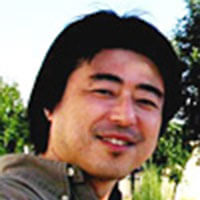
-
Mishima’s Negative Political Theology: Dying for the Absent Emperor
With his spectacular suicide, Yukio Mishima reminded the postwar Japanese of what they had believed in during the war; it was not just the emperor as a god but the emperor as God, the absolute and transcendental being. While his behavior should be criticized for its anachronism, Mishima’s theology gives us a clue to understanding the idea that drove many Japanese to sacrificial death.
Krauthammer, Charles
- America, Battle-Tested (Article)
Lacquement, Jr., Richard A.
- The Casualty Aversion Myth (Paper)
Lecomte-Tilouine, Marie
Levene, Mark
Library of Social Science
-
Review Essay of Carolyn Marvin & David Ingle’s Book Blood Sacrifice and the Nation: Totem Rituals and the American Flag
What is really true in any community is “what its members can agree is worth killing for,” or what they can be compelled to sacrifice their lives for. What is “sacred” within a given society is that set of beliefs “for which we ought to shed our own blood.” Warfare constitutes the central ritual allowing societies to enact or demonstrate faith in the nation.
-
Review Essay of Ivan Strenski’s Book Contesting Sacrifice: Religion, Nationalism, and Social Thought in France
Nationalists attacked the deplorable state of French morale. Intellectuals were derided for “egoism” and “lazy melancholy;” workers for lack of enthusiasm for collective causes. War represented a spiritual force that would “bind citizens into common service for the nation,” incubating a spirit of national unity. Just as Jesus’ death cleansed the sins of humanity, so common soldiers’ self-sacrifices were seen as expiation for France’s sins.
-
Review Essay of Ruth Stein’s Book For Love of the Father: A Psychoanalytic Study of Religious Terrorism
Collective forms of violence are perpetuated in the name of an ideal that binds the group together and functions to “sanctify the actions of a (collective) perpetrator on a (collective) victim.” Large scale forms of violence are undertaken in the name of an ideal object that can move groups to decree the liquidation of anything that “challenges its validity and superiority.” Forms of behavior deemed criminal on the individual level may be “condoned and encouraged when perpetrated collectively.”
Lim, Timothy C.
- Constructivism and International Relations (Presentation Slides)
Linderman, Gerald F.
-
Embattled Courage: The Experience of Combat in the American Civil War
(Book Excerpts)
“The linkage between honor and courage manifested itself in Civil War solders’ frequent referenced to the ‘honorable death’—inevitably the courageous death— and the ‘honorable wound’—inevitably suffered in the course of courageous action.”
Lockwood, Renee

-
Sacrifice and the Creation of Group of Identity: Case Studies of Gallipoli and Masada
“It has often been acknowledged that nations are born of war. Yet recent scholarship suggests that it is not the sacrifice of the enemy that creates a unified group identity, but the sacrifice of the group’s own. This essay demonstrates the truth of this hypothesis on the basis of two primary case studies: the ‘sacrifices’ made at Gallipoli and Masada.”
MacMillan, Margaret
- The Rhyme of History: Lessons of the Great War (Essay with Photos)
Mahoney, Mark J.
Marklund, Andreas
Martin, Emily
Marvin, Carolyn
- A New Scholarly Dispensation for Civil Religion (Book Chapter)
- Blood Sacrifice and the Nation: Revisiting Civil Religion (Paper)
- Blood Sacrifice and the Nation: Totem Rituals and the American Flag (Book Excerpts)
- The Totem Myth: Sacrifice and Transformation (Book Chapter)
Mayer, Ruth, & Weingart, Brigitte
McPherson, James
-
For Cause and Comrades: Why Men Fought in the Civil War
(Book Excerpts)
“Civil War soldiers wrote much about courage, bravery, valor—the mark of honor. But they wrote even more about cowardice—the mark of dishonor. Most wanted to avoid the shame of being known as a coward—this is what gave them courage. Civil War soldiers went forward into a hail of bullets because they were more afraid of showing the ‘white feather’ than they were of death.”
Mendible, Myra

-
Post-Vietnam Syndrome: National Identity, War, and the Politics of Humiliation
This essay is concerned with the extent to which Vietnam consistently plays out in popular memory as a psychodrama of humiliation, casting America in the role of victim. News pundits, filmmakers, and political leaders alike have exploited the evocative power of this humiliation tale, invoking its stock characters and themes to elicit predictable responses in target audiences. This affective logic binds subjects to cycles of compensatory violence, fueling militaristic strains in America’s political culture and setting the stage for a series of wars and interventions.
Mertz, David
Mineau, André
- SS Thinking and the Holocaust (Book Extracts)
Moghadam, Assaf
Monnet, Agnieszka Soltysik
Mosse, George L.
-
National Cemeteries and National Revival: The Cult of the Fallen Soldiers in Germany
(Paper)
“The cult of the fallen assimilated basic themes of Christianity. The exclamation ‘Now we are made sacred’ implied an analogy of the sacrifice in war to the passion and resurrection of Christ.”
Mumford, Lewis
- The Myth of the Machine (Vol. II): The Pentagon of Power (Book Excerpts)
- The Myth of the Machine (Volume I): Technics & Human Development (Book Excerpts)
Murphy, Raymond E.
- National Socialism: Basic Principles, Their Application by the Nazi Party’s Foreign Organization, and the Use of Germans Abroad for Nazi Aims (Government Document, U.S. Department of State)
Musolff, Andreas
- Health and Illness of the Leviathan. Hobbes’s Use of the Commonplace Metaphor of the Body Politic (Paper)
- Immigrants and Parasites: The History of a Bio-social Metaphor (Paper)
- Metaphor, Nation and the Holocaust: The Concept of the Body Politic (Book Extracts)
- Metaphorical Parasites and ‘Parasitic’ Metaphors: Semantic Exchanges Between Political and Scientific Vocabularies (Paper)
- The metaphor of the “body politic” across languages and cultures (Paper)
- What can Critical Metaphor Analysis Add to the Understanding of Racist Ideology? Recent Studies of Hitler’s Anti-Semitic Metaphors (Paper)
- What role do metaphors play in racial prejudice? The function of antisemitic imagery in Hitler’s Mein Kampf (Paper)
Neocleous, Mark
- The Fate of the Body Politic (Paper)
Neumann, Boaz
Novak, Ben
- The Status of Hitler Today (Paper)
O'Brien, Gerald V.

-
Indigestible Food, Conquering Hordes, and Waste Materials: Metaphors of Immigrants and the Early Immigration Restriction Debate in the United States
In the United States, fear and denigration of immigrants was present throughout the 19th century. Whether the country could adequately assimilate such a large number of persons was a predominant concern. The organism metaphor was a particularly apt means of describing the presumed adverse impact of immigrants on the nation. The central feature of the organism metaphor is that the social community is viewed as analogous to a physical body. Just as the integrity of our own bodies may be threatened by contaminating external elements, so too is the social body vulnerable to corruption by invading sub-groups.
-
Social Justice Implications of the Organism Metaphor
The denigration of marginalized groups is frequently supported through the widespread employment of metaphors that present a pejorative image of the group in question. The organism metaphor, wherein the target group is portrayed as a threat to the integrity of the social body, is a particularly important metaphoric theme in the advancement of social injustice.
O'Donnell, Meghan

-
Dangerous Undercurrent: Death, Sacrifice and Ruin in Third Reich Germany
Beneath the Nazi façade of racial supermen and cultural glory, another ideology developed, one obsessed with death, ruin and martyrdom which helped bring Hitler’s Germany to its apex, and then to its ultimate climactic end.
O'Dwyer, Thomas
- Not The 9 O’Clock News (Article)
Osho/Rajneesh
- Waking Up the World (Video)
Pajari, Ilona
Paprocki, Maciej
Patterson, Richard
Petrović, Predrag
- Enemy as the Essence of the Political (Article)
Porter, Thomas Earl
Rahimi, Babak
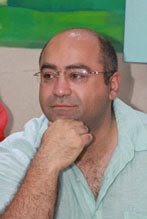
-
The Transhuman Soldier: A Comparative Look at World War I and the Iran-Iraq War
With his sacrifice, the soldier transforms the ordinary cycle of existence into something livelier and more transhuman. His sacrifice on the battlefield becomes a creative event to conquer death. He attains a sacred quality with his ability to generate an all-too-superhuman vitality, a sacred death of transcendental reality. The act of sacrifice empowers the self of a soldier against the natural process of demise—and towards the creation of a transcendent entity.
Rayle, Crystal
Ricks, Steven D.
Roberts, Michael
Romaniuk, Scott Nicholas
Rubenstein, Richard L.
Rummel, Rudolph J.
-
20th Century Democide
(Statistics)
The new total for the 20th Century = 262,000,000.
- 20th Century Mortacracies (Statistics)
- Definition of Democide (Book Chapter)
- Democide in Totalitarian States: Mortacracies and Megamurderers (Book Chapter)
- War Isn’t This Century’s Biggest Killer (Article)
Sagan, Eli
- At the Dawn of Tyranny (Book Excerpts)
Salimi, Rana

-
Review Essay of Mark Schantz’s Book Awaiting the Heavenly Country: The Civil War and America’s Culture of Death
The political system of U.S. society in the Civil War era demanded that its citizens sacrifice their lives and commit violence against their fellow countrymen so the nation as a whole could survive. The dominant religious ideology of the time required citizens to voluntarily exchange the mundane world for the heavenly rewards of the afterlife. The individual could achieve the eternal life in heaven and could be commemorated as a hero if he was ready to sacrifice himself.
Sang, Hea Kil
- A Diseased Body Politic (Paper)
Scarry, Elaine
- The Body in Pain: The Making and Unmaking of the World (Book Excerpts)
Schmelowszky, Ágoston
Seitz, David W.
-
Silent Thunder: War Memorials and the Break Up of the Collectivistic Motive to Sacrifice
(Paper)
Christianity portrayed Christ’s sacrificial death as the perfect model of righteous action.
Seiyo, Takuan
Sharpe, Matthew
Snider, Don M.
Sokołowska-Paryż, Marzena
- Reimagining the War Memorial, Reinterpreting the Great War (Book Excerpt)
Spencer, Alexander
Spielberg, Steven
- Omaha Beach Landing, June 6, 1944 (Video, excerpt from Saving Private Ryan)
Stalbank, Chris
Stein, Howard F.
Stein, Ruth
Stickle, Douglas R.
Strenski, Ivan

-
How to Think About Suicide Bombers
I am trying to see how well I can move along understanding of the phenomenon commonly, but problematically, called suicide bombing. As a student of religion, I am particularly interested in seeing how far some of the perspectives developed in the modern study of religion might assist this process of making sense of a troubling phenomenon of our own time. Here, I propose that we need to pay greater attention to the ‘sacrificial’ designations of these “human bombings”.
-
Sacrifice, Gift and the Social Logic of Muslim ‘Human Bombers’
To understand Muslim ‘human bombers’, we must see them within the discourse of jihad, but also within that of ‘sacrifices’ and ‘gifts’. ‘Human bombings’ are not, therefore, simply matters of utilitarian military tactics, but are also religious and social as gifts, martyrdoms and sacrifices. This article proposes that we need to pay greater attention to the ‘sacrificial’ designations of these ‘human bombings’ as made by Muslims and which are rooted in Islamic discourse.
-
Sacrifice: Bad Math, Bad Grammar
Sacrifice means loss, giving up, destruction and death. But, much talk about sacrifice carries on as if this loss, this subtraction, actually achieves addition. The soldier ‘sacrifices’ themselves in battle, but this doesn’t count as diminishment. It actually adds to whatever social body of reference is in play. So, the question is why and how can sacrifice add to the social whole, when, in the fact of destruction and death, it subtracts from the social whole, by removing one of its members from the body of the living?
Suzuki, Shunryu
- Zen Mind, Beginner’s Mind (Book Excerpts)
Swann Jr., William
Szink, Terrence L.
Tanaka, Yuki
Tepora, Tuomas
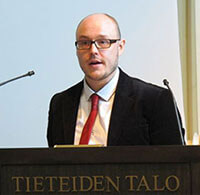
-
Redirecting Violence: The Finnish Flag as a Sacrificial Symbol, 1917-1945
National flags are essential in making sense of the citizens’ sense of belonging to the nation. National celebrations—as well as the routine, everyday ‘lagging’ of the nation in the media—form a context which shapes peoples’ experience of their environment. National flags represent the shared feelings and values of a collective, forming a link between civil society and the state.
Terrell, Robert
-
Reading Death and Sacrifice in the Berlin Völkischer Beobachter
(Paper)
Poet Wilhelm Ehmer wrote that the tome of humanity would forever feature the story of the German Volk, written in blood as a memorial. Berliners are bearers of the banner of the Reich—to die may be their honorable duty.
Thorup, Mikkel
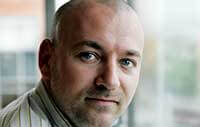
-
Total Enemies: Understanding “The Total Enemy” through Schmitt, Arendt, Foucault, and Agamben
When, after the end of the Nazi regime, a doctor who participated in the mass killings was asked how he could reconcile the Hippocratic Oath with his actions during the war, the doctor said: “Of course I am a doctor and I want to preserve life. And out of respect for human life, I would remove a gangrenous appendix from a diseased body. The Jew is the gangrenous appendix in the body of mankind.”
Trueman, Chris
- First World War Casualties (Statistics)
Tunç, Hakan
Tustin, Francis
- Autistic Barriers in Neurotic Patients (Book Excerpt)
Twemlow, Stuart W.
Tyson, Paul
Victoria, Brian
Vlahos, Michael
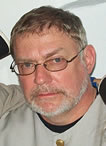
-
America is a Religion
The great sociologist Robert Bellah called America a civil religion in 1967, and he was met with denial and disbelief. Perhaps if he had just gone a bit further he might have mercifully lifted the veil for all of us: America is not just civil religion — it is honest-to-God church religion.
-
America: Imagined Community, Imagined Kinship
Imagined kinship is the foundation of national community. Imagined kinship is the cultural process that permits people in a society to collectively believe that they belong to each other—that they are part of the same kinship construct—even though they are most likely strangers to each other. Imagined community also makes the state the trusted manager of this process—powerfully affirming our connection and commitment to each other, for example, in war—so that the collective kinship construct is essential to the very idea of a modern nation state.
-
Counterterrorism, American Exceptionalism, and Retributive Justice
’“Terrorism” inhabits America’s civil-religious consciousness just as it did for Tacitus, representing “the enemy of mankind:” as an affront to light and truth. Terrorism, in the American experience, issues a divine test: Is America still beloved of the Almighty, and still his agent to redeem humankind? If not, then what shall be America’s path?’
-
D-Day (June 6, 1944), the Invasion of Normandy: “A moment of unique American sacrifice”
(Audio, John Batchelor Show, WABC)
Michael Vlahos podcast on the John Batchelor radio show: “We had to create—not just a mythic moment—but a moment of unique American sacrifice. We managed to do that. As we look back, it is the great liturgy of the American experience—not just in World War II—but of the America that was born on that day. It’s a kind of high mass of the nation—of the American ethos.”
- Drone Killings, American Exceptionalism—and Retributive Justice (Audio, John Batchelor Show, WABC)
- Fighting Identity: Sacred War & World Change (Book Excerpts)
-
Rites of Spring: Sacrifice, Incarnation, and War
The 20th century’s wars—from 1914-1951, and their aftermath—killed perhaps 150 million individual human beings. We casually ascribe this calamity to madness, evil, or the inevitable efficiencies of an industrial economy. Yet I argue that this killing was embedded in the desire of peoples to fulfill—through war—the vision that drove them. This was the paradoxical, unconfessed vision of Modernity—which replaced universal institutions of collective identity (for centuries vested in social order and Church) with a dynamic new alternative.
-
Terrorism’s Sacred Heart: The Sacrifice
“What makes terrorism so powerful is that it leverages the most powerful of human actions: the sacrifice. For thousands of years, human sacrifice has represented a sacred rite, with many layers of explicit ritual and symbol—in which our most precious loss transforms into our most precious gift. Think of the sacrifice—enacted and memorialized—as the mortar of our collective belief and belonging.”
-
The Ideology of Sacrifice is Hemorrhaging
In his essay, “The Rites of Spring,” Michael Vlahos stated that War in Modernity was an “extended ritual demanding mass sacrifice in which the literal ‘body and blood’ of millions at once renewed and re-fertilized the nation.” However, this national theology “no longer rules America as it once did.” The fervent faith of a whole nation—leading to sacrifice on the high altar—has been “emptied of belief.”
Vuorinen, Marja
- Enemy Images in War Propaganda (Book Excerpt)
Wachowski Brothers, The
- The Matrix (1999) (Video Excerpts)
Waldman, Paul
- American War Dead, By the Numbers (Article)
Warner, Frank
-
Dictatorships’ Death Toll
(Statistics)
262 million murdered in the 20th century – and not by war
Weddle, David

-
What Should We Call Fallen Warriors? Review Essay of Kelly Denton-Borhaug’s Book U.S. War-Culture, Sacrifice and Salvation
Denton-Borhaug argues that references to combat deaths as “necessary” sacrifices are drawn from centuries of Christian interpretations of the death of Jesus as required for salvation and transform war into a sacred enterprise devoted to saving the nation from its enemies. She believes that until such language is replaced by more neutral rhetoric, we will never escape the delusion that war is the necessary, even “transcendental,” means to ensure national security.”
Weiner, Robert
-
Prof. Robert Weiner: The Nature & Impact of WWI
(Video)
“All the capacity of industrial society—straining at the bit for destruction. One of the French soldiers called it extermination. I call it routinized, mechanized genocide: The genocide of people on their own citizens.”
Weir, Peter
-
Gallipoli (1981) - Ending
(Video Excerpt from Peter Weir’s film)
Several young men from rural Western Australia enlist in the Australian Army during the First World War. This scene depicts the film’s sad ending.
-
Gallipoli (1981) - Massacre
(Video Excerpt from Peter Weir’s film)
Depicts the charge at Nek at Gallipoli (August 7, 1915). Anzac troops are massacred by the Turks when they get out of the trench armed only with bayonets. This astonishing scene, according to Michael Vlahos, represents an accurate depiction.
Weitz, Eric D.
- Genocide in the Twentieth Century (Book Chapter)
Wertham, Fredric
- The Geranium in the Window: The ‘Euthanasia’ Murder (Book Chapter)
Whalen, Robert
-
Bitter Wounds: German Victims of the Great War, 1914-1939
(Book Excerpts)
“Disabled veteran speaking at a convention in 1930: “Everyone here sensed the demonic quality of the war. It was like some elemental catastrophe, which threw the entire planet into torment. We who have lived through this inferno can never be free from it.‘”
-
German Casualties of the First World War
(Statistics)
“The Great War lasted fifty-two and a half months. Roughly 9,500,000 soldiers, from all nations, were killed, which comes to about 181,000 deaths per month, or about 6,302 deaths every 24 hours. Of some 15.6 million males born between 1870 and 1899, about 13 percent died in the 52 ½ months of the Great War.”
White, Matthew
-
Wars of the Twentieth Century
(Statistics)
“Approximately 35 to 40 million soldiers have died in the wars of the Twentieth Century, nearly three quarters of them in the two World Wars.”
Wikipedia
- Human Wave Attacks (Article)
Willette, Jeanne
Winters, Jonah
- Martyrdom in Jihad (Paper)
Winther, Mats
Wæver, Ole
- Securitisation Theory - International Relations (Video)
- Securitization and Desecuritization (Chapter 3 of Lipschutz, R. On Security)
Zhu, Pingchao

-
Mao’s Martyrs: Revolutionary Heroism, Sacrifice, and China’s Tragic Romance of the Korean War
(Paper)
“China entered into the Korean War at a critical historical moment: the new Communist regime had just celebrated its first anniversary in October 1950. In military strength and industrial capacity, China was no match for its opponent, the well equipped and supplied United Nations Command (UNC) under the United States military command leadership. What China could rely on was its massive manpower and political propaganda—entrenched in the Marxist doctrine of anti-imperialism and internationalism.”
Žižek, Slavoj
-
Mapping Ideology
(Complete Book)
Edited by Slavoj Žižek
- The Matrix, or, The Two Sides of Perversion (Paper)
- The Sublime Object of Ideology (Complete Book)
- Žižek, Slavoj | Internet Encyclopedia of Philosophy (Article)